Gaming's Weirdest, Wildest, and Wackiest Controllers and Peripherals
Somebody, somewhere thought that these crazy-ass accessories were a good idea.

Today I'm taking a saunter through video gaming history to highlight some of the most bizarre and unusual peripherals, controllers, and accessories seen over the years. While you may have seen some of these famous follies before, hopefully there are a few items on this list that'll take you by surprise.
 Picture CreditSamba de Amigo Maracas
Picture CreditSamba de Amigo Maracas
All manner of musical instrument peripherals have been designed over the years, from Rock Band's guitars, keyboards, and drums to the bongos that came with Donkey Konga. But perhaps the oddest of them all is the pair of maracas that you use to control the Dreamcast title, Samba de Amigo. Developed by Team Sonic and released in 2000, this music rhythm game had players shaking and rattling along to the beat of an eclectic mix of tunes at three different heights, while striking occasional poses as dictated by the game.
In these days of wireless controllers, it's easy to forget that Samba de Amigo's controllers had to be connected to a two-foot-long ultrasonic sensor that was incorporated into a floor mat, which itself was connected to the Dreamcast. Despite being a little clunky, it worked fine, and made playing Samba de Amigo a novel and entertaining experience.
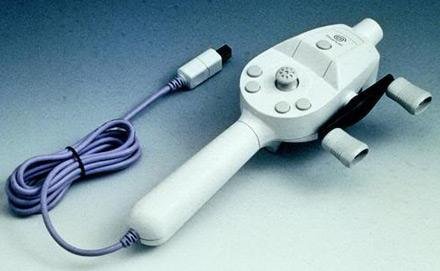 Dreamcast Fishing Controller
Dreamcast Fishing Controller
If you've ever wanted to go through the motions of fishing, but don't like the idea of dealing with tackle, bait, and potentially inclement weather, this rather unusual turn-of-the-century Dreamcast controller is exactly what you're looking for. Compatible with all six Dreamcast fishing games, and with the additional bonus of also being playable with Soul Calibur and Virtua Tennis, this motion-sensitive peripheral enabled players to cast their line with a flick of the wrist, feel vibrations when a fish started to bite, and then reel it in using the spindle on the side of the controller.
While it's easy to make fun of this controller for being rather ridiculous, credit where credit's due – it actually works well with the games it was designed for.
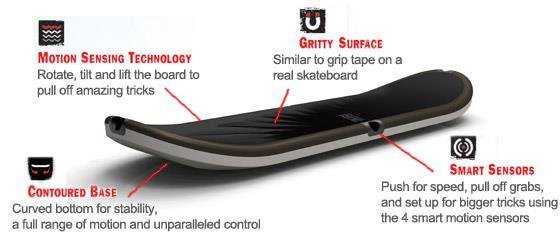 Tony Hawk Ride Skateboard
Tony Hawk Ride Skateboard
From 1999 to the mid-00's, Activision's Tony Hawk skateboarding series ruled the roost. The Pro Skater and Underground games in particular were highly acclaimed by both players and critics alike, and it seemed like there was no stopping them. However, by the latter stages of the decade, a lack of gameplay innovation and over-saturation due to yearly releases caused player fatigue, and the Tony Hawk franchise began to stagnate.
In a bold attempt to revitalize sales, Activision released Tony Hawk's Ride, a 2009 game that shook things up by featuring a life-sized skateboard that the player stood on to control the game. The peripheral's infrared sensors translated movements of the board into on-screen actions that the player's avatar then performed. It might have sounded like a good idea when it was conceived around the marketing table, but unfortunately players just didn’t take to the idea of using a faux-skateboard as a controller, and Tony Hawk's Ride went on to become one of the year's biggest critical and commercial failures.
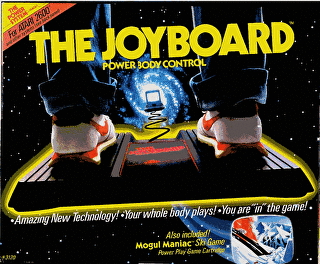 The Joyboard Full Body Control
The Joyboard Full Body Control
Decades before the Wii Fit balance board had players precariously teetering in front of their TVs, this 1982 Atari 2600 peripheral from the Amiga Corporation – the same one that would go on to produce the eponymous Commodore computer – offered players the chance to do the same thing. Think of it as a glorified joystick that you stand on. As you rock back and forth, and left and right, switches in the unit are activated to control whatever's happening on screen.
The peripheral was originally designed to work with the Amiga Corporation's first-person skiing game Mogul Maniac, but it could be used to control any Atari 2600 game. Not that you'd want to, of course. It was hideously impractical.
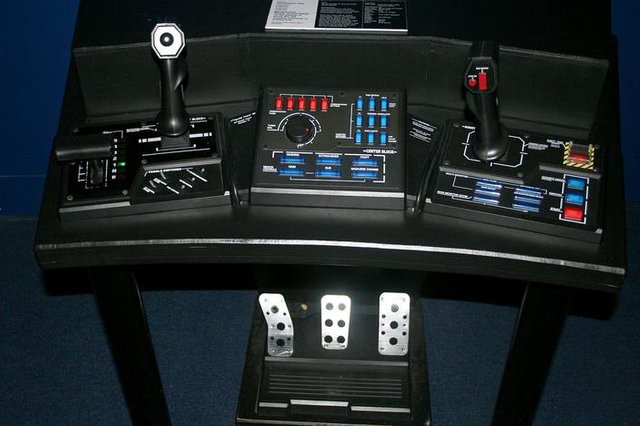 Steel Battalion Controller
Steel Battalion Controller
Gather ye round, and gasp in wonder at what is one of the most ambitious and complex controllers ever designed for a video game. Featuring two joysticks, a throttle, three driving pedals, and around 40 individually-functioning buttons, this bespoke setup was created specifically for Capcom's 2002 Xbox title, Steel Battalion.
The game took a sim-like approach to mech combat, with the player booting up the operating system of their "Vertical Tank" before every mission by pressing the correct series of buttons and switches, manually dialing into different combat channels, and ensuring that their machine didn't overheat or topple over when cornering too quickly. Yep. This was a seriously hardcore mech title.
Despite costing a whopping $200, Steel Battalion sold out its initial production run, and demand was high enough for Capcom to produce a second edition of the game and controller, which was also snapped up by mech fans around the world.
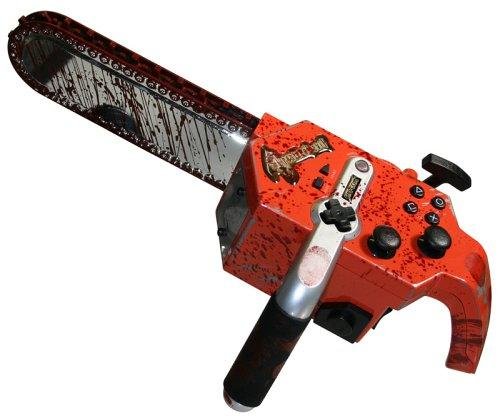 Resident Evil 4 Chainsaw Controller
Resident Evil 4 Chainsaw Controller
Released in 2005, Nubytech's limited edition Resident Evil 4 chainsaw controller is a classic case of style over substance. Two versions were made available, a red one that's essentially a PlayStation 2 controller, and a yellow version that's GameCube-compatible. I'll happily admit that they both look very cool, and I really like the detailing of their uniquely-applied blood splatters, but when it actually comes to actually using them for their intended purpose, they're just not very ergonomic.
Still, as gaming collectibles, they're quite desirable, and they certainly look great on a shelf.
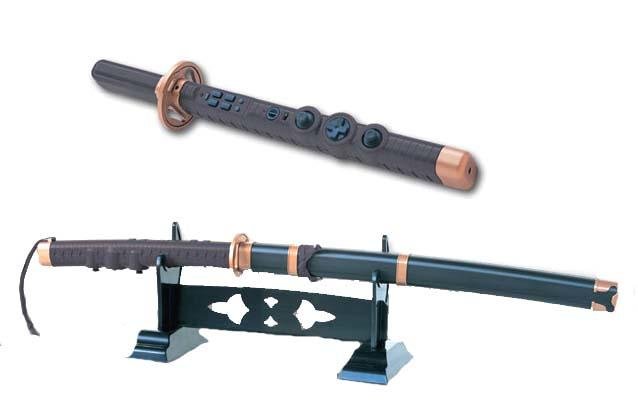 The Soul Controller
The Soul Controller
This wireless, katana-shaped PlayStation 2 controller was made by Hori Japan in 2004 specifically for Onimusha 3. What makes it particularly interesting is that it features a motion-sensitive activator that syncs with Capcom's classic to enable players to swing their sword and perform in-game hack and slash movements. Fun times ahoy – although at 38-inches in length, you have to make sure that you leave plenty of room for your swordplay.
 Wu-Tang Controller
Wu-Tang Controller
I was about to write that the Wu-Tang controller was designed to be played with Activision's 1999 PlayStation game, Wu-Tang Shaolin Style, but the reality is that it doesn't seem to have really been designed to play with anything. Not only do its buttons feel cheap, its ergonomics are absolutely terrible, and it also doesn't feature the analog sticks of a typical Dualshock controller.
Yet despite its distinct lack of functionality, the Wu-Tang controller, available only by buying a limited edition version of Wu-Tang Shaolin Style, has become a quite collectible gaming item that has been known to exchange hands for up to $100 on eBay.
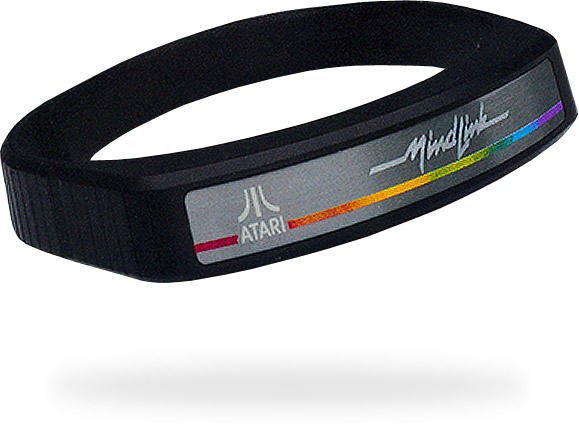 Picture CreditAtari Mindlink
Picture CreditAtari Mindlink
Although the Mindlink never went into commercial production – it was canned in 1984 when Warner Bros. sold Atari to Jack Tramiel – this ambitious device nevertheless deserves to be included in this list for being so out-of-left-field.
The concept was that you'd wear the Mindlink around your head, and it would enable you to control Atari 2600 and 7800 games with your mind. If you think that sounds too crazy to be true, you're right. The reality was that the infrared sensors in the headband actually read the movements of the muscles in your forehead, and translated those into on-screen actions. In other words, you were really controlling games by moving your eyebrows, which apparently resulted in players developing headaches when they were invited to test the device.
However, that wasn't the reason why the Mindlink never made it into production. Jack Tramiel wanted Atari to compete with Apple as a computer company, and he felt that the Mindlink was just a toy, so it was canceled – despite millions of dollars being spent on developing it.
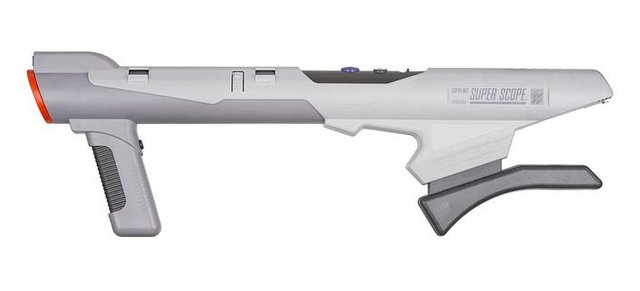 Nintendo Super Scope
Nintendo Super Scope
We've seen all kinds of shapes and sizes of light gun controllers over the years, but few are as impressively large as Nintendo's bazooka-like Super Scope. Launched in 1992 with the Super Scope 6 game, this two-foot-long SNES peripheral ended up being supported by just a dozen games, including ports of Operation Thunderbolt and T2, and the rather unusual rail shooter, Yoshi's Safari.
I remember getting a Super Scope for review back in the day and having a lot of fun using it – for a while. Like most light gun peripherals, its novelty soon wore off, and most of the games designed for it just weren't particularly good. Still, the Super Scope remains one of the most iconic light guns ever designed, even if it no longer works with modern digital TV sets.
 U-Force
U-Force
Developed by Broderbund for the NES in 1989, the U-Force was an early motion control device that was designed to deliver a whole new way of interacting with your games. The peripheral opened up like a laptop, and used two perpendicular infrared sensors to detect the user's gestures, which were then translated into on-screen movements. At least, that was the concept. In practice, the sensors weren't particularly accurate and thus made controlling games notoriously difficult.
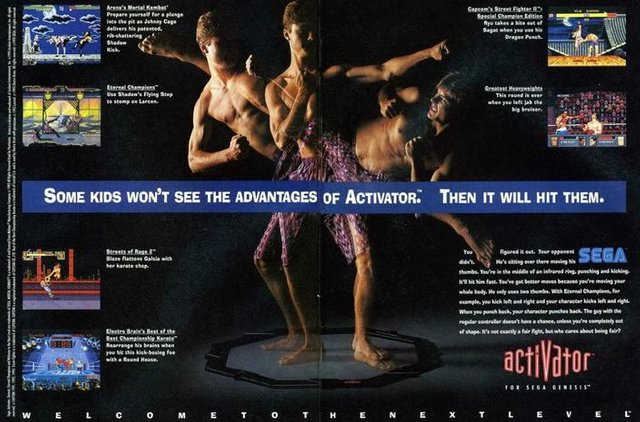 Sega Activator
Sega Activator
Sega's ambitious full-body motion controller was released for the Genesis in late 1993, and comprised eight individual infrared sensors that were arranged in an octagon-shape and placed on the floor. Each part of the device was mapped to a different function of the control pad, and ultimately represented all four directions of the joypad, its three buttons, and start.
The idea was that the player would stand in the middle of this setup, and use their hands and feet to activate the different sensors, which would then be sent to the Genesis and translated into on-screen actions. Needless to say, it was about as effective as it sounds. Not only was it a nightmare trying to remember which sensor did what, but the system wasn't particularly responsive, which resulted in it being impractical for the fighting games it was intended to be used with.
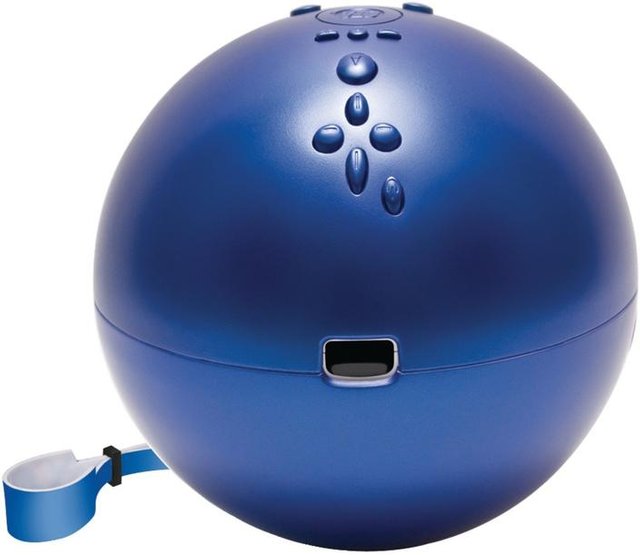 Wii Bowling Ball
Wii Bowling Ball
Towards the latter stages of the last decade, there were a myriad of manufacturers making of all manner of plastic accessories that could be used with a Wii to (allegedly) enhance your gaming experience. There were tennis rackets, steering wheels, and even musical instruments. But for me, CTA Digital's bowling ball stands out as the king of them all. Designed to house a Wiimote, and featuring adjustable finger holes that enabled you to customize it to perfectly fit your grip, you could use this hefty spherical device with all of your favorite bowling games, from AMF Bowling: Pin Busters to Wii Sports.
Considering the size (almost eight inches in diameter) and weight (one and a half pounds) of this peripheral, it's not surprising it comes with a double-thick safety strap. I imagine it could cause quite a bit of damage should it come flying out of your hand during a particularly vigorous bowl.
 Wii Baby and Me
Wii Baby and Me
Released exclusively in Australia in 2009, Baby and Me is a Wii title created by 505 Games whose special edition came with a doll into which you'd insert a Wiimote.
When played with Baby and Me's eleven minigames, the doll would cry, giggle, and gurgle through the Wiimote's speaker, essentially reacting to how it was being handled. Apparently, the game even worked with the Wii Fit balance board, which could be used to rock the baby to sleep, burp it, and teach it to walk. How's that for innovation?
Regular editions of the game came with a pink holster that you could use to attach a Wiimote to your child's favorite doll, bear, or whatever else they wanted to turn into an interactive baby. The mind boggles.
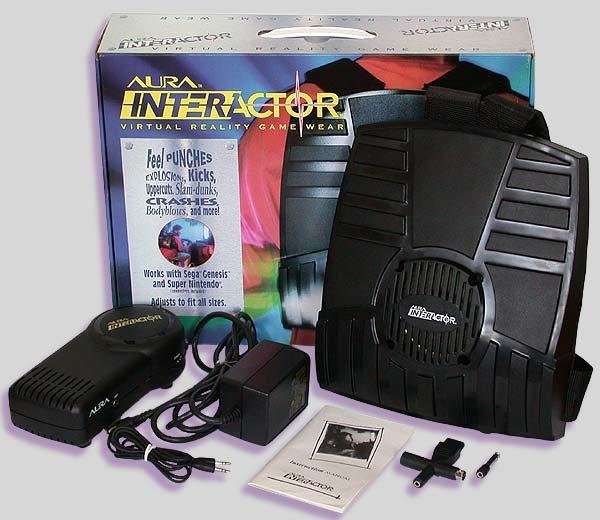 Picture CreditAura Interactor
Picture CreditAura Interactor
Released in 1994 for the SNES and Genesis, the impressive-sounding Aura Interactor Virtual Reality Game Wear featured patented electromagnetic actuator technology that made it the first commercially available haptic suit.
The "interactive game vest" was basically a big plastic backpack that you'd put on, and then plug into the audio feed of your console. Any bass sounds below a certain frequency would be converted into vibrations by the Interactor's transducer that you could feel through your back as you played – which made it ideal for use with fighting games. Indeed, Aura Systems signed a deal with Acclaim to cross-market the Interactor, and Mortal Kombat II actually featured specific audio cues designed to make use of the Interactor's technology.
Even though it was fairly pricey at around $100, the Interactor was quite successful and sold 400,000 units. The item still has a cult following today, with some players using it with their VR setups to help enhance their gameplay experience.
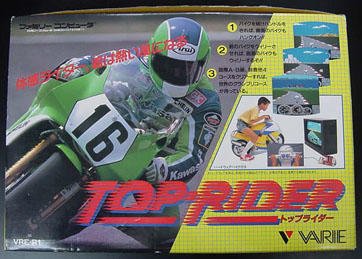 Picture CreditTop Rider Motorcycle Controller
Picture CreditTop Rider Motorcycle Controller
Perhaps inspired by the sit-on version of Sega's Super Hang-On coin-op, Varie's Famicom-only Top Rider motorcycle game controller is one of the strangest peripherals ever made. Released sometime around 1990 – I remember seeing ads for it in Japanese gaming magazines of the period and being highly amused by them – it comprises a small, inflatable motorcycle that features a set of functional handlebars with integrated controls.
Basically, you blow it up, plug it into your Famicom, and then sit on top of it while you play Top Rider, the motorcycle game it shipped with. What could possibly go wrong?
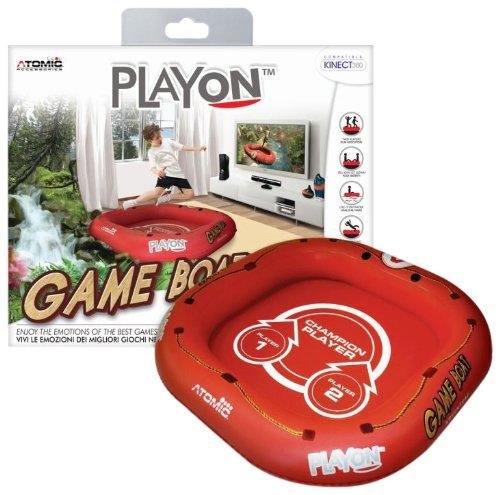 Playon Game Boat
Playon Game Boat
While the previous inflatable peripheral has a certain naive charm about it, there's almost nothing to redeem DBTech's Playon Game Boat. It's so mind-blowingly pointless, it makes you wonder how it actually became a product.
The concept behind this astonishingly low-tech video gaming "peripheral" is that you simply blow it up with the included pump, drop it in front of your TV, and then stand in it while you leap, jump, and generally cavort to the five minigames featured in Kinect Adventures. Yep. The Game Boat doesn't actually do anything. It's just a thing that you stand in. The trouble is, it actually hampers your ability to interact with the game because it reduces the space you have available to move around.
Still, one of the selling points of the Playon Game Boat is that it's actually a fully-functional dinghy that you can use on water… assuming you're up for paddling around in a square-shaped boat.
This article may contain links to online retail stores. If you click on one and buy the product we may receive a small commission. For more information, go here.
Hi! I am a robot. I just upvoted you! I found similar content that readers might be interested in:
http://www.usgamer.net/articles/gamings-weirdest-wildest-and-wackiest-controllers-and-peripherals
Not indicating that the content you copy/paste is not your original work could be seen as plagiarism.
Some tips to share content and add value:
Repeated plagiarized posts are considered spam. Spam is discouraged by the community, and may result in action from the cheetah bot.
Creative Commons: If you are posting content under a Creative Commons license, please attribute and link according to the specific license. If you are posting content under CC0 or Public Domain please consider noting that at the end of your post.
If you are actually the original author, please do reply to let us know!
Thank You!